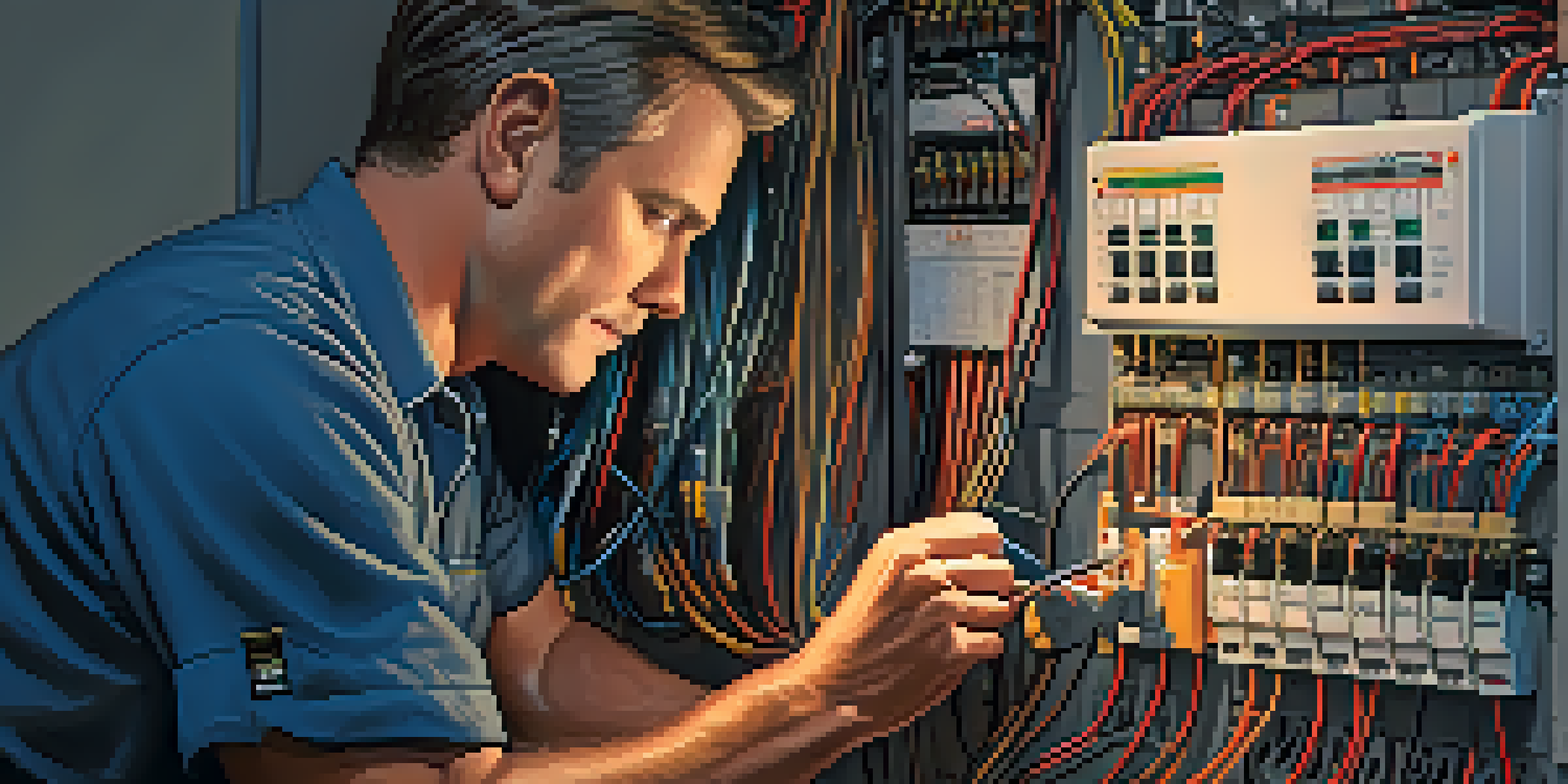Common Electrical Mistakes in Home Renovations

Neglecting to Hire a Licensed Electrician
One of the biggest mistakes homeowners make during renovations is attempting to handle electrical work themselves. While DIY projects can be rewarding, electrical systems are complex and can pose serious safety hazards if not properly installed. A licensed electrician brings expertise and knowledge that ensures your home meets local codes and regulations.
Electricity is really just organized lightning.
By hiring a professional, you not only ensure safety but also potentially save money in the long run. Incorrect installations can lead to costly repairs or even fire hazards. It's crucial to recognize that some tasks are best left to the experts, especially when it comes to wiring and circuits.
When seeking an electrician, make sure to check their credentials and reviews. Investing in a qualified professional is a worthwhile step in safeguarding your home and ensuring a successful renovation.
Overloading Circuits and Outlets
Another common mistake is overloading electrical circuits and outlets, which can lead to overheating and even fires. Many homeowners underestimate the power needs of their appliances, resulting in circuits that can't handle the load. It's essential to understand your electrical system's capacity and distribute power evenly across circuits.

Using too many high-wattage devices on a single circuit can trip breakers or cause wiring to fail. For example, plugging multiple space heaters into one outlet during winter can exceed the circuit's capacity. Always check the wattage requirements of your devices and ensure they are compatible with the outlets you plan to use.
Hire a Licensed Electrician
Engaging a licensed electrician ensures safety and compliance with local codes, preventing costly mistakes during renovations.
If you find that your renovation plans require more power, consider having an electrician install additional circuits or outlets. This proactive approach will not only enhance safety but also improve the overall functionality of your home.
Ignoring Proper Wiring Techniques
Improper wiring is a widespread issue that can lead to significant problems down the line. Many homeowners overlook the importance of following correct wiring techniques, such as using the right gauge wire for specific circuits. For instance, using a thinner wire for a circuit that requires a thicker gauge can create overheating risks.
The code is not a set of rules, but a collection of safety principles.
It's also vital to ensure that all connections are secure and properly insulated. Loose or exposed wires can cause shorts, leading to power outages or even electrical fires. Take the time to learn about wiring methods, or consult an electrician if you're unsure.
Remember, electrical systems are designed to be safe when installed correctly. Skipping steps or cutting corners may seem like a time-saver, but it can lead to catastrophic consequences that could have easily been avoided.
Forgetting to Plan for Future Needs
During renovations, it’s easy to focus solely on current needs and overlook future electrical requirements. As your family grows or technology evolves, your power needs may increase. Failing to plan for future electrical demands can leave you with inadequate outlets and circuits.
Consider how your lifestyle might change in the coming years. Will you be adding more electronics, or do you anticipate needing additional lighting? Incorporating extra outlets or circuits during renovations can save you from costly upgrades later on.
Plan for Future Electrical Needs
Anticipating future power requirements during renovations can save you from expensive upgrades and ensure your home remains functional.
Think of it as planting a tree: the more you prepare now, the more shade you’ll have in the future. Planning for electrical needs ahead of time ensures that your home remains functional and adaptable.
Using Incompatible Fixtures and Appliances
Another common mistake is using fixtures and appliances that are incompatible with existing electrical systems. Each fixture or appliance comes with specific voltage and wattage requirements, and mismatching these can lead to functionality issues or safety hazards. For example, installing a high-wattage fixture on a low-capacity circuit can result in tripped breakers or overheating.
Always check the specifications of your appliances and fixtures against your electrical system's capabilities. This will help you avoid issues that could arise from using incompatible products. A quick review of product manuals can save you from potential headaches.
If you're unsure about compatibility, consulting with an electrician can provide clarity. They can help you choose the right products that work seamlessly with your home’s electrical system.
Neglecting to Update Electrical Panels
Many homeowners fail to update their electrical panels when renovating, which can be a significant oversight. An outdated panel may not support the increased electrical load from new appliances or systems, resulting in frequent circuit trips and potential hazards. If your home is over 20 years old, it might be time to consider an upgrade.
An updated electrical panel not only improves safety but also enhances the efficiency of your entire electrical system. This is especially important if you plan to install energy-intensive appliances or systems like central air conditioning.
Install GFCIs for Safety
Integrating GFCIs in moisture-prone areas protects against electrical shock and enhances safety in your home.
Don't wait for problems to arise; proactively upgrading your electrical panel is a smart investment in your home’s safety and functionality.
Ignoring Ground Fault Circuit Interrupters (GFCIs)
Many homeowners overlook the importance of Ground Fault Circuit Interrupters (GFCIs) in areas prone to moisture, such as kitchens and bathrooms. GFCIs are designed to protect against electrical shock by shutting off the circuit when they detect an imbalance. Installing them in the proper locations is crucial for safety.
Neglecting to install GFCIs can lead to dangerous situations, particularly in spaces where water and electricity can come into contact. For instance, using a hairdryer near a sink without a GFCI can be life-threatening. Always ensure that these safety devices are installed in areas at risk.

When renovating, make it a point to integrate GFCIs into your plans. They are a simple yet effective way to enhance your home’s safety and provide peace of mind.